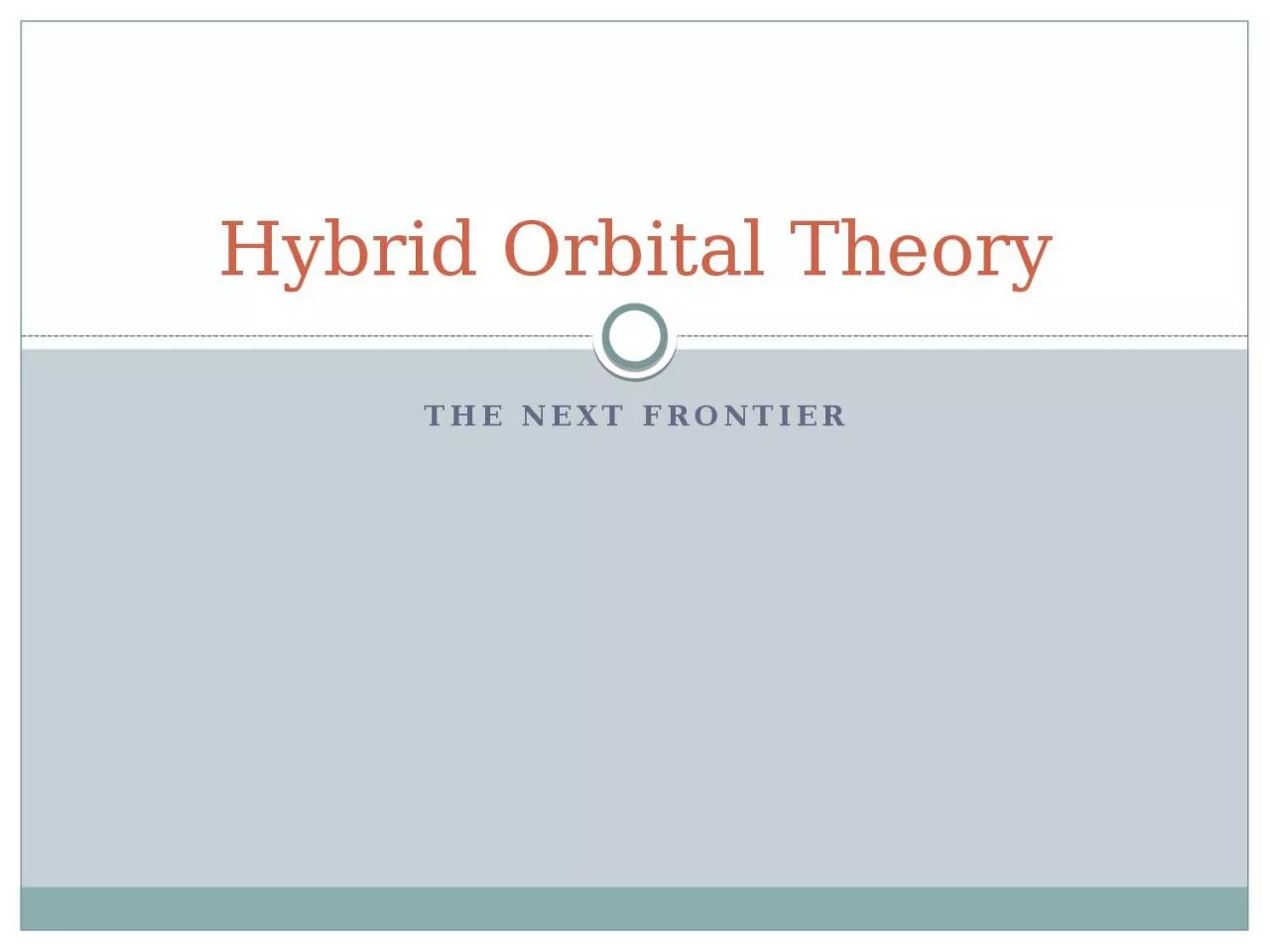

The Extension of Valence Bond Theory Valence Bond theory does a good job in explaining which orbitals are involved in bonding The break down comes when we try to explain molecular shape Water according to VBT should have a 90 ID: 1010548
Download Presentation The PPT/PDF document "The next frontier Hybrid Orbital Theory" is the property of its rightful owner. Permission is granted to download and print the materials on this web site for personal, non-commercial use only, and to display it on your personal computer provided you do not modify the materials and that you retain all copyright notices contained in the materials. By downloading content from our website, you accept the terms of this agreement.
1. The next frontierHybrid Orbital Theory
2. The Extension of Valence Bond TheoryValence Bond theory does a good job in explaining which orbitals are involved in bonding.The break down comes when we try to explain molecular shape.Water, according to VBT should have a 90o bond angle, in reality, the bond is closer to 104o.
3. Hybridization of OrbitalsHybridization is not a physical phenomenon; it is merely a mathematical operation that combines the atomic orbitals we are familiar with in such a way that the new (hybrid) orbitals possess the geometric and other properties that are reasonably consistent with what we observe in a wide range (but certainly not in all) molecules.
4. Linear Molecules – sp orbitalsThe ‘s’ electron is promoted into one of the empty ‘p’ orbitals. These two orbitals ‘blend’ together to create 2 half filled ‘sp’ orbitals, orientated at 180o from one another for the purpose of bonding.
5. Trigonal molecules - sp2 orbitalsIn a molecule such as BF3, 3 half filled orbitals are needed. Once again, one of the ‘s’ electrons is promoted into an empty ‘p’ and the 3 orbitals are blended to create 3 half filled sp2 orbitals for the purpose of bonding. These orbitals arrange themselves as far apart as possible at take the corner positions of an equilateral triangle with a bond angle of 120o.
6. sp2 hybridization
7. Tetrahedral Molecules – sp3 orbitalsCH4 requires 4 half filled orbitals. The half filled s and 3p orbitals blend to create 4 sp3 orbitals.The orbitals align themselves at the corners of a tetrahedral, having a bond angle of about 109.5o
8. sp3 hybridization
9. ExtentionIt is possible to extend this idea to predict how 5 or even 6 hybrid orbitals can be formed by including ‘d’ orbitals for any element beyond the 2nd period.sp3d – 5 bonding orbitalssp3d2 – 6 bonding orbitals
10. Lone PairsIf lone pair electrons are present on the central atom, these can occupy one or more of the hybrid orbitals.Lets look at ammonia – NH3
11. Referenceshttp://www.chem1.com/acad/webtext/chembond/cb06.html#SEC2